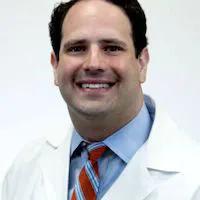Opinion
Video
Expert reports on 24-month results of SNM device for OAB
Author(s):
Colin Goudelocke, MD, offers insight on 2 abstracts from the 2024 Society of Urodynamics, Female Pelvic Medicine & Urogenital Reconstruction Winter Meeting.
Colin Goudelocke, MD

In this article, Colin Goudelocke, MD, discusses the 2024 Society of Urodynamics, Female Pelvic Medicine & Urogenital Reconstruction Winter Meeting abstracts MP19: Rechargeable sacral neuromodulation device improves symptoms of non-obstructive urinary retention at 6-month follow-up in a global, prospective, post-market study, and MP21: Clinical performance and safety of sacral neuromodulation at 24 months in subjects with overactive bladder: results from the global post-market ELITE study. Goudelocke is a urologist with Ochsner Health Center in New Orleans, Louisiana.
[These abstracts] are looking at what's called the ELITE trial of the InterStim Micro. The one I presented was about overactive bladder at 2 years. And I think the one that one of my coauthors presented was looking at non-obstructive urinary retention at 6 months. We're not all talking about rechargeables the way we were 3 or 4 years ago simply because frankly, both Medtronic and Axonics came out with really good primary cell batteries. When the InterStim Micro and the Axonics device came out, it was a big deal, because we were getting 5, 6, 7 years out of a primary cell battery. And all of a sudden, we had a rechargeable battery that can last for 10 years, maybe 15 years, maybe 20. This has gotten a little bit less exciting, frankly, because Axonics and Medtronic did a really good job of making this leap ahead in terms of their primary cell batteries. And now we have primary cell batteries that will last 10, 15, 20 years. And so I think in some ways, that's a little bit less exciting, simply because we don't put in as many micro devices as before, because the primary cell batteries have become so much better.
I presented these data now, basically, every 6 months to a year for the past 2 years; I think it's still relevant for a couple of reasons. Number 1, the only way to get a really small device in someone still is a rechargeable. So if you have a patient who's very thin or very concerned about the appearance of this device showing through the skin, or a patient maybe that a larger device has caused site pain, and they like neuromodulation therapy, they just decided that the primary cell battery is just too big for them. A rechargeable is still the only way that you're going to be able to do that. And frankly, I think those patients deserve to know what this device is going to be doing in 2 years. The second reason is that, even though I don't put in nearly as many micro devices as I did in the past, I still put a bunch of them in in the past. And again, those patients deserve to know how is this device going to work at 2 years, because for a lot of them, they're happy to recharge, they're satisfied with their therapy. The fact that there's a primary cell device that will last just as long has come out doesn't really matter to them. They have a device that's going to last for years and years and years. And so I think they need to know how is this going to be at 2 years, and at least for the overactive bladder component, we know that, if you look at that little curve, we get a little bit of fall-off as almost every neuromodulation device does over those first 6 months. But then, the success rate is perfectly the same at 6 months and 12 months and 2 years. We can pretty definitively say that these devices act a lot like the primary cell devices, the Axonics device and the InterStim X. They act very similar, and they're safe. They have a similar safety profile at 2 years for overactive bladder, and at 6 months for non-obstructive retention. And they have very similar efficacy, which is what you would expect. You would hope that the device is stimulating, and in a similar way you would expect to get a similar response. I mean, in that way, you could kind of say, "well, that's a big yawn. It basically works the same as a primary cell device." But that's really important news for people with those devices to know that it works the same as a primary cell device, and they deserve that information. Hats off to SUFU for saying, just because it's not revolutionary, it's still important data, and we need to share it. I appreciate them accepting both of those, because there are a lot of these devices in patients, and I think it's still important, even if it's basically confirmatory, and not revolutionary.

















